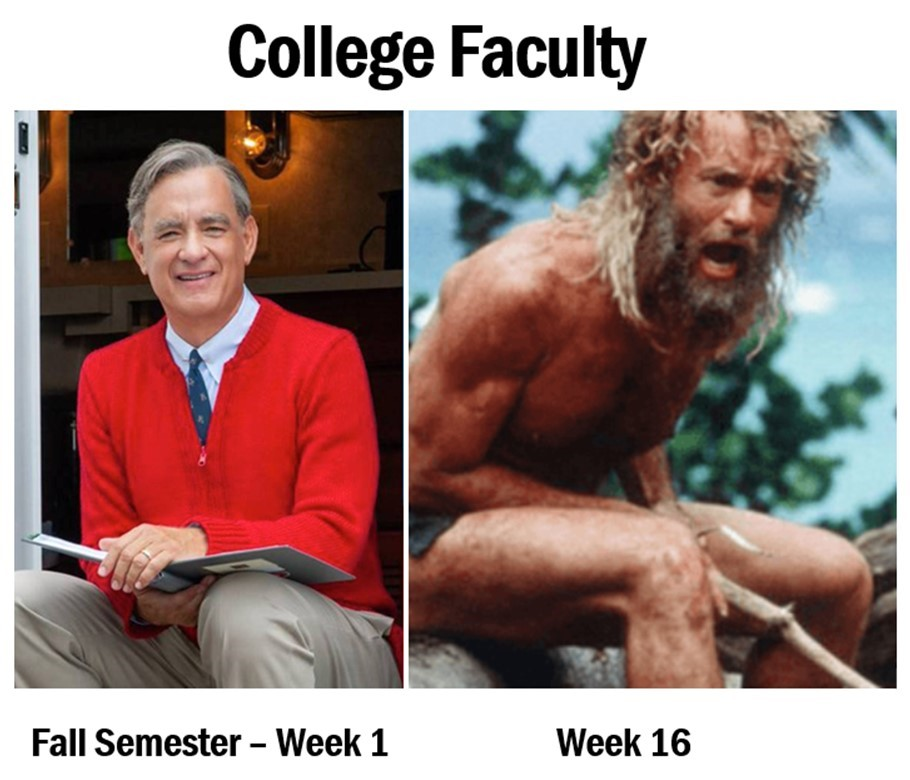Fall 2021 Resilience – Newsletter 5
The goal of the Smeal Academy is to equip everyone with best practices and strategies for teaching, learning, and technology to ensure the Smeal community is prepared to respond to the unique challenges of teaching and learning during the Fall 2021 semester. Between now and the end of the Fall 2021 semester, we will be sending periodic emails with practical tips and information, providing live sessions, and holding virtual consultations.

November is the month of gratitude. Here in eLDIG, we are often grateful to work with amazing staff and faculty to create courses that make a difference to our students.
In our work, we can get tired and stressed. In some ways, in this pandemic era, we have more pressure on us than ever before. Mitigating that stress and pressure can be achieved by practicing gratitude. When someone asks what we are grateful for we think of family, friends, opportunities, etc. Gratitude is something that we accept we should do, but that we rarely talk about how to do. When someone practices gratitude, what do they actually do each day? It is really just about the small things. Someone might:
- Say one small thing they are grateful that happened in their day before a meal
- Keep a gratitude journal
- Include an act of kindness in your life each day
- Look up from your phone or work and notice the beauty in nature each day
- Avoid negative media and movies with destructive content
- Commit to one day a week when you won’t complain about anything
- Say thank you for the little things others do for you, things you normally take for granted.
Conlon C. (nd) 40 Simple Ways To Practice Gratitude, Lifehack
Gratitude in Teaching and Learning
A growing body of groundbreaking research shows that gratitude has the power to heal, energize, and transform lives by enhancing people psychologically, spiritually, physically, and cognitively. Gratitude can impact focus and resilience in class and when experiencing difficulties. Wilson (2016) found that “when students intentionally practice gratitude toward learning, they tended to report better focus during class, while studying, or taking an exam. This increased focus may be linked to a more positive attitude about learning as well as a reduced stress level. Since college academics often produce stress, these findings are worth considering. Energy that might be taken up feeling stressed or anxious may be able to be redirected to focusing on and making sense of new information after a student mindfully chooses a grateful spirit. Another benefit for students who intentionally practice gratitude is experiencing added strength to sustain effort when learning feels challenging. This resilient spirit is rooted in students’ appreciation that challenges can help them grow as learners. Thus, rather than closing down one’s mind when faced with challenges, a student with a grateful spirit may view those challenges as an opportunity to learn.” (p. 9)
With this in mind, we can be role models and consider embedding gratitude practices into the classroom. A study by Howels (2014) found that when teachers embed this practice it has positive impacts in areas of relationship between teachers and students. Thereby increasing student wellbeing and a positive atmosphere. Some gratitude activities you could try in the classroom include:
- Model gratitude yourself
- Start the day with positive affirmation
- Have students make a social media post about something they are grateful they learned in class that day
- Thank a student when they make an excellent observation of the materials in class
- Provide opportunities for students to show gratitude to peers in their class
- Ask students to complete one act of kindness in their day, and to tell you how that went
- Celebrate students’ growth and achievement in class
- Encourage student independence
- Ask a student to describe why and how they expressed gratitude
- Have students reflect on the past, express gratitude and recognize their changes over time
With our own gratitude practice at the heart of our pedagogy, we create the right environment for gratitude to flourish.
Howells, K. (2014). An exploration of the role of gratitude in enhancing teacher–student relationships. Teaching and Teacher Education, 42, 58-67.
Howells, K. (2004). The role of gratitude in higher education. Research and Development in Higher Education, 27(2), 164-173.
Wilson, J. T. (2016). Brightening the mind: The impact of practicing gratitude on focus and resilience in learning. Journal of the Scholarship of Teaching and Learning, 16(4), 1-13.
 Current News
Current News
 Upcoming Live Sessions
Upcoming Live Sessions
- Smeal Academy Session: The Finish Line – Strategies for Ending the Semester Strong As we approach the end of the semester, there’s so much to do to ensure a smooth and successful finish. Come for a discussion about some practices and time-saving tips to end the semester strong! We’ll explore tips related to Canvas, grading, student communication and feedback and more. Please feel free to enjoy your lunch while we meet. Join us Monday, November 15th from Noon–1 via Zoom.
NOTE: Recordings and resources from previous sessions can be found on our SmealTLT Website.
 Tips of the Week
Tips of the Week
- Tip #1: Make sure that important dates and information are provided in multiple modalities, such as on Canvas, in the syllabus, and on slides or other visual means of communication.
- Tip #2: Check in on your students’ understanding. Use a minute paper, exit tickets, and online discussion forums or social annotation tools to check for students’ understanding after class. If you discover after class that students did not understand a key course concept, take time to review it at the start of the next class session.
- Tip #3: Encourage students to engage with the course and collaborate virtually. Many of the tools that instructors use when teaching remotely can be brought into the face-to-face classroom, allowing students to interact with each other virtually while in the same space. These tools also allow instructors to monitor student work in real-time and offer feedback and guidance.
Rice University (nd) “Can you hear me in the back?”: Strategies for teaching (and learning) while wearing a mask.
 Resources
Resources
 Upcoming Live Sessions
Upcoming Live Sessions Contact Us
Contact Us








 Tips of the Week
Tips of the Week Resources
Resources
 Current News
Current News


